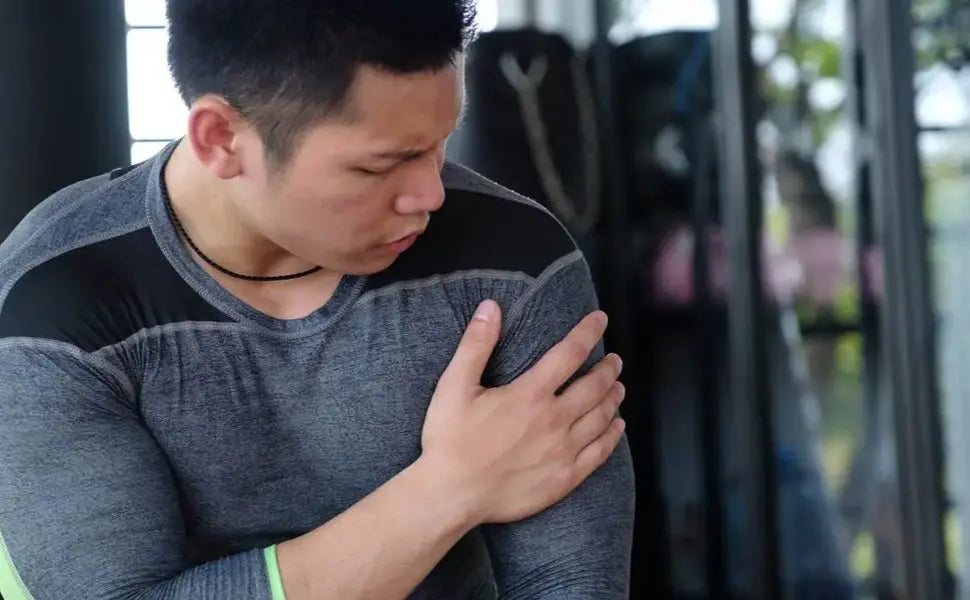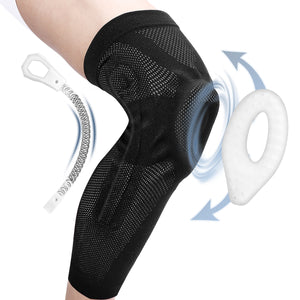Can a Shoulder Support Brace Help Shoulder Instability

can help relieve shoulder instability by stabilizing the shoulder joint and limiting unnecessary movement. It is recommended to wear braces during sports, recovery periods, or acute pain and to pair with shoulder muscle training to enhance the support effect.
What is Shoulder Instability
Generally speaking, means the shoulder joint loses its original stability and has a tendency towards dislocation or subluxation, especially when the range of motion in the shoulder is very large. The shoulder joint comprises the scapula, humerus, and clavicle; therefore, the capsule of the shoulder joint, ligaments, and muscles cooperate in maintaining shoulder stability. While the shoulder joint is highly flexible and, thus, capable of moving freely, this advantage also disadvantages the individual since it increases the vulnerability of the body part to injuries. Trauma, overexertion, and congenital conditions that affect the ligaments, joint capsule, or musculature enclosing the shoulder joint can further cause instability in the shoulder.
The manifestations of shoulder instability include the feeling of discomfort or even pain during movement of the shoulder joint. In severe instances, it makes daily activities like raising the arm or even lifting objects difficult. It is very significant in athletes and people who have high frequencies of upper limb activity. Prolonged shoulder instability may also result in complications like arthritis; thus, early intervention is very important.
Causes of Shoulder Instability
Amongst the most common conditions that can be attributed to the causes of shoulder instability are traumatic dislocation, frequent overuse, and genetic factors. Traumatic dislocation is usually caused by a sudden, intense external force—for example, a fall or an impact can displace or cause a subluxation of the shoulder joint. If such trauma occurs and is not treated properly, the stability of the shoulder structure will be destroyed, thus leading to shoulder instability.
With regard to athletes or people who often have to use their shoulders, the shoulder joint during strenuous activities is subjected to stretching and strain that can lead to ligament laxity or excessive stretching of the joint capsule. This is very common in sports where frequent exertion is needed, such as swimming, tennis, and weightlifting. Eventually, the repetition in motion for all these sports could result in instability of the shoulder.
Genetic factors also predispose an individual to shoulder instability. For example, disorders of the connective tissue result in loose structures of the ligaments and joint capsules, which can be easily dislocated. Sometimes, the patients need to be more careful during regular activities that lead to shoulder instability.

How Braces Help
These braces or supports relieve shoulder instability by keeping the shoulder joint stable and limiting certain unnecessary movements. Generally, most shoulder braces are made of elastic material contoured to the curve of the shoulder, hence offering it support and compression to help the joint be in the correct position, reducing stretching and movement of the shoulder structure during activities. This is very effective in relieving pain and injury caused by shoulder instability.
The compression from the brace also enhances proprioception, that is, the ability to detect the position and status of the shoulder. This would reduce the unintended or excessive motions that may be imparted to the joint. In this manner, those who are prone to during typical activities or sports are substantially protected by the application of a brace from additional insult to the shoulder joint. Meanwhile, braces can relieve pain caused by fatigue of muscles and ligament laxity by rendering comfort and stability to the shoulder.
While these auxiliary effects can be achieved with the assistance of braces, there needs to be a complete solution. As a matter of fact, some particular strengthening exercises of the shoulder muscles are often necessitated so as to increase the muscle strength around the shoulder, which is required for enhancing the true stability of the shoulder. Braces should only be utilized as a temporary tool to provide support and should be relied on only short term.
Benefits of Using a Brace
The benefits of a are the supportive effects on the shoulder joint and the psychological comfort it gives. Braces can limit the range of motion of the shoulder, preventing secondary injury caused by excessive stretching. This will be very important in patients with already existing shoulder instability because the braces will keep the shoulder protected in daily life and sports from further damage.
Braces also contribute to the process of recovery. During recovery of the shoulder joint, especially after surgery or an acute injury, braces keep the shoulder joint stable, improving its condition and that of the structures surrounding it, hence making the process of recovery faster. The pain and inflammation could also be greatly alleviated as a result of the compression effect a brace would exert by reducing swelling at the site of injury.
Other benefits of wearing a brace are that it increases the patient's confidence and ability to feel more secure when performing activities. Shoulder instability also may raise some psychological problems, such as fear of dislocation or pain in the shoulder. The presence of a brace makes the patient more comfortable with moving the arm and finding control and confidence in the shoulder slowly once more. With the use of a brace, they can gradually return to normal activity levels and regain their freedom of movement.
When to Use a Brace
The timing of wearing a shoulder brace should be determined based on individual circumstances. Generally, the following situations are more suitable for using a brace:
-
Recovery period: During the recovery period after shoulder surgery or acute injury, wearing a brace can provide necessary support and prevent unnecessary movement from affecting the shoulder joint.
-
Protection during sports: For patients with existing shoulder instability or risk of dislocation, wearing a brace during sports or high-intensity activities can effectively prevent secondary injuries, such as while playing basketball, tennis, or weightlifting.
-
Acute pain: When acute pain or discomfort is caused by shoulder instability, wearing a brace for a short period can provide additional support and relief, helping to reduce pain and restore stability in the shoulder.
Braces worn over a long period may result in their dependence on muscles and further weakening of their strength. One should not rely on the use of braces for extended periods but instead wear them only when necessary. Meanwhile, brace use should be combined with appropriate shoulder rehabilitation exercises to improve the strength of shoulder muscles and ligaments.
Choosing the Right Support
According to the type of shoulder braces and one's particular needs, there are three major types of shoulder braces: mild support, moderate support, and . Each of these situations will require one of these braces accordingly. Mild support is used for individuals who develop mild shoulder instability while doing daily activities. Medium support is used for those with a certain risk of dislocation or pain in the shoulders. Heavy support is usually for postoperative or acute injury patients.
Comfort and fitting are also very important. The shoulder compression brace must be designed to take care of the shoulder curve by neither being too tight nor too loose. Much tightness could lead to an inappropriate effect on blood circulation, while looseness fails to give substantial support. Another aspect is breathability; good breathability can avoid skin discomfort from long wear.
It follows that one has to consult with a professional doctor or a physical therapist while choosing the brace. The type and method of wearing should be chosen according to one's condition. Besides, adjust the position and tightness at any time when wearing the brace to make it comfortable and effective.
Caring for Your Brace
Proper care can make the brace last longer and remain effective. Cleaning of the brace is very necessary, especially for individuals who have been wearing it for a long period because the brace is prone to absorb much sweat and skin oil. Washing it regularly will keep it clean and hygienic. Commonly, most braces can be hand-washed with mild soap and cold water and air-dried naturally, avoiding exposing them to direct sunlight and high-temperature drying.
It should also be noted that storage for the brace is very important. When not in use, the brace should be stored in a dry and ventilated place to avoid moisture or deformation. Avoid casually pulling the elastic straps of the brace to avoid influencing the support effect.
Besides, the brace condition is to be followed regularly. During use, its elastic parts might slowly loosen, and the effect of supporting will reduce. In cases of loosening, deformed parts, and any other damage to the brace, it needs to be replaced instantly to avoid compromising the support effect














